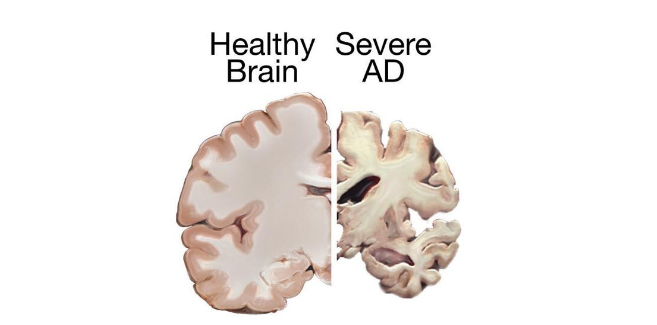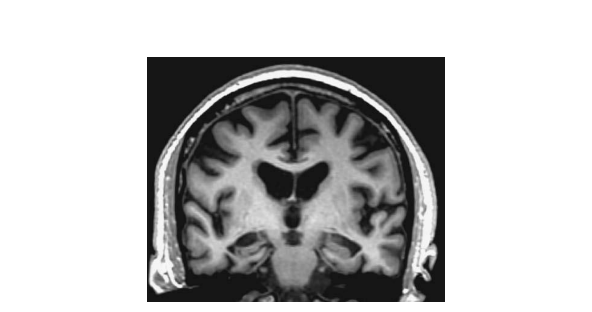By: Thalia Kaylyn Averil
Alzheimer’s disease is the most common cause and the most common type of dementia in older adults. In the late stages, Alzheimer’s disease can cause patients to progressively lose cognitive abilities such as memory, judgment, personality, visuospatial orientation, and language. Individuals with Alzheimer’s disease often experience severe disability, muteness, and immobility over a period of five to ten years.
This disease has been associated with a number of risk factors, with the biggest risk factor being age. Alzheimer’s disease usually does not show symptoms until the patient has reached the age of 50. The chance of developing this disease increases drastically with age; the prevalence of Alzheimer’s disease doubles every five years, starting from 1% in the 60–64 year age group and increasing to 40% or higher in the 85–89 year age group. However, early dementia can occur if a person has trisomy 21, one of the causes of Down syndrome. In addition, other risk factors for Alzheimer’s disease include traumatic brain injury, depression, cardiovascular disease, cerebrovascular disease, smoking habits, family history of dementia, elevated homocysteine levels, and the presence of the APOE e4 allele.

Figure 1. Image of a normal brain (left) and the brain of an Alzheimer’s patient (right).
The pathological hallmarks of Alzheimer’s disease are amyloid plaques and neurofibrillary tangles, both of which are primarily seen in the late stages of the disease. Amyloid plaques are a buildup of beta-amyloid peptide (Aβ) in the gray matter of the brain, while neurofibrillary tangles are accumulations of tau protein that normally occur within nerve cells. Alzheimer’s disease is caused by the death of neurons and usually starts in one region of the brain, namely the entorhinal cortex.
- Amyloid plaques: Extracellular deposits of beta-amyloid peptide will form into neuritic plaques, resulting in round, microscopic lesions. A hypothesis states that the buildup of beta-amyloid in the brain can trigger loss of connections between nerve cells and a lack of neurotransmitters or messenger substances in the brain which then contributes to the appearance of dementia symptoms.
- Neurofibrillary tangles: Neurofibrillary tangles are collections of threads that form in brain cells and are made from an abnormal buildup of the protein tau. Normally, the tau protein helps brain cells with their internal transportation. However, the tau protein changes shape and forms neurofibrillary tangles in Alzheimer’s disease. This causes disruption to the transportation system in brain cells and damages these cells.

Figure 2. Amyloid plaques (bottom right) and neurofibrillary tangles (top left).
Over several years, the symptoms of Alzheimer’s disease develop gradually. This disease can be divided into three stages, namely the early stage, middle stage, and late stage. Memory loss is a major sign of Alzheimer’s disease in the early stages. In the early stages, someone with Alzheimer’s disease will usually experience the following:
- Forgetting recent events or the location of objects
- Asking the same question repeatedly
- Difficulty in making decisions
- Become less adaptable and more careful when trying new things
- Mood changes, which are often characterized by increased anxiety
The development of Alzheimer’s disease will worsen memory problems. Individuals with Alzheimer’s disease may find it increasingly difficult to remember the names of people they know, such as family, friends, neighbors, and others. Usually, patients with Alzheimer’s disease at this stage need help in carrying out daily activities. Additionally, the following signs and symptoms may also appear in the middle stages:
- Disorientation appears, such as getting lost or wandering without knowing the time
- Delusions or harboring suspicions towards others
- Problems with language or speech
- The appearance of hallucinations
- Anxiety are becoming more frequent
In the final stages, individuals with Alzheimer’s disease often experience delusions and hallucinations which get worse over time and show violent, demanding, and distrustful behavior towards other people around them. As Alzheimer’s disease worsens, a number of additional symptoms may also appear, including:
- Dysphagia or difficulty swallowing and eating
- Difficulty moving or changing positions.
- Weight loss
- Incontinence, which is loss of bladder control making it difficult to hold in urination
- Loss of voice progressively
So, what can be done to prevent Alzheimer’s disease?
- Control and prevent high blood pressure
Apart from reducing the risk of heart disease and stroke, controlling high blood pressure can also help prevent Alzheimer’s disease. High blood pressure is a risk factor for cognitive decline in the elderly.
- Do regular physical activity
The benefits of physical activity include reducing the risk of falls, maintaining mobility, maintaining an ideal body weight, and improving heart health. This can reduce the risk of stroke, high blood pressure, diabetes, depression, and other diseases that can worsen age-related cognitive decline.
- Quit smoking
Quitting smoking can reduce the risk of lung disease, cancer, heart disease, and other diseases related to smoking and maintain brain health.
- Control blood sugar
Learn how to manage blood sugar for people with diabetes.
- Consult to the doctor
If you have risk factors, especially if you are elderly, or experience the signs and symptoms of Alzheimer’s disease above, immediately consult a doctor for further examination. In Alzheimer’s disease, MRI scans are beneficial for identifying early signs of the disease and differentiating its causes, which is crucial for early diagnosis and initiating prompt treatment. MRI scans can detect specific changes in the brains of Alzheimer’s patients. One of them is atrophy or the shrinkage of the brain regions associated with the disease, such as the hippocampus, entorhinal cortex, and others. Additionally, white matter hyperintensities in the brain are also observed, which indicate demyelination and loss of axons.

Figure 3. MRI in a patient with Alzheimer’s disease.
Resources
- Ropper AH, Samuels MA, Klein JP, Prasad S.Adams and victor’s principles of neurology. 11th ed. New York: McGraw Hill; 2019.
- Kumar A, Sidhu J, Goyal A, Tsao JW. Alzheimer disease [Internet]. Unknown ed. Treasure Island: StatPearls Publishing; date of publication unknown [updated 2022 Jun 5] [cited 2024 Jan 31]. Available from: https://www.ncbi.nlm.nih.gov/books/NBK499922/
- National Health Service. Overview – Alzheimer’s disease [Internet]. England: National Health Service; date of publication unknown [reviewed 2021 Jul 5] [cited 2024 Jan 31]. Available from: https://www.nhs.uk/conditions/alzheimers-disease/
- Johnson KA, Fox NC, Sperling RA, Klunk WE. Brain imaging in Alzheimer disease. Cold Spring Harb Perspect Med. 2012 Apr;2(4):a006213. Available from: https://www.ncbi.nlm.nih.gov/pmc/articles/PMC3312396/
